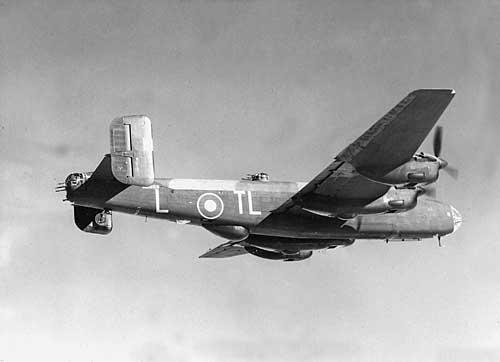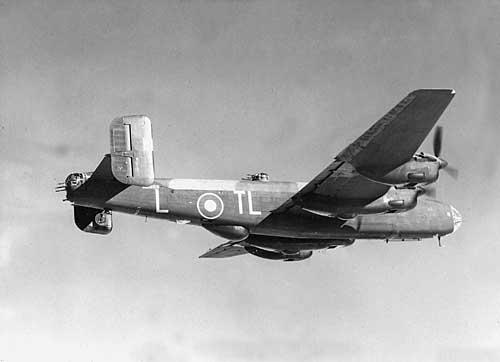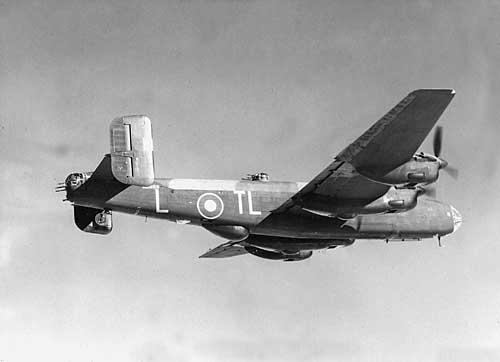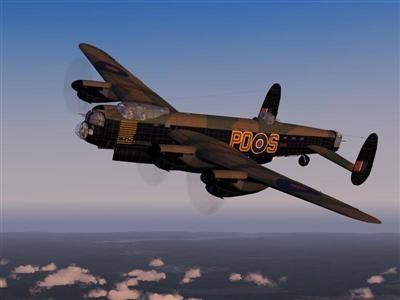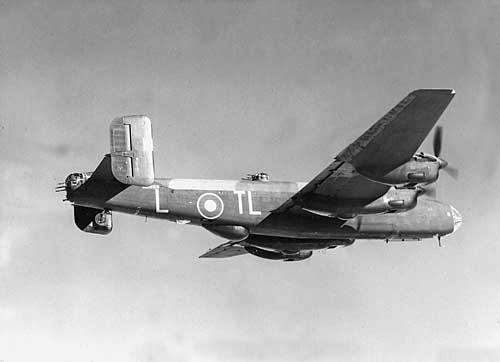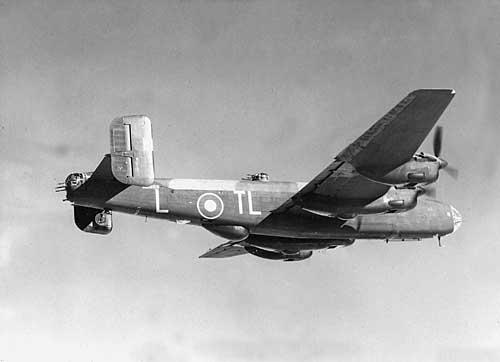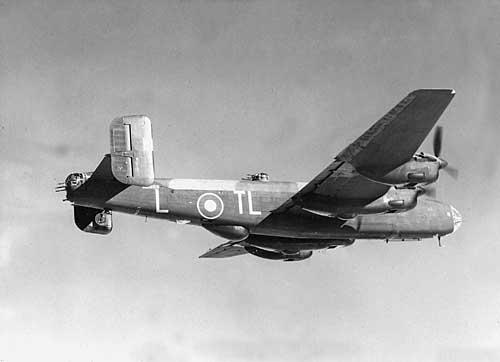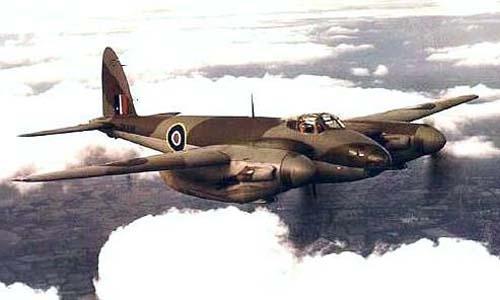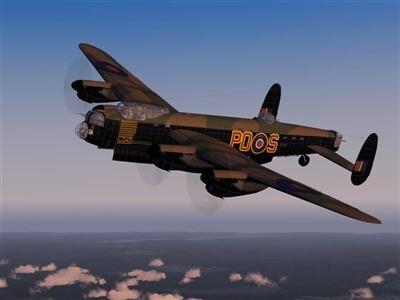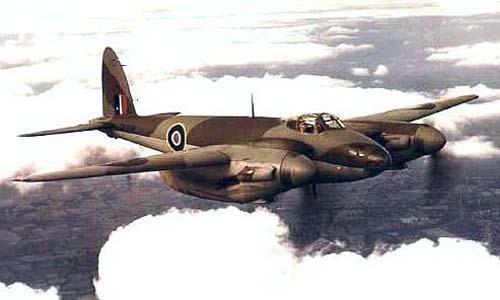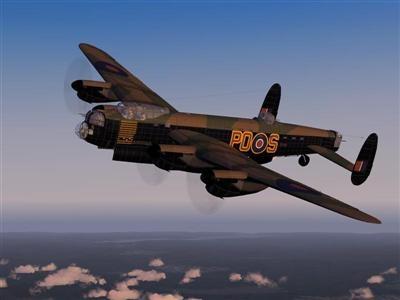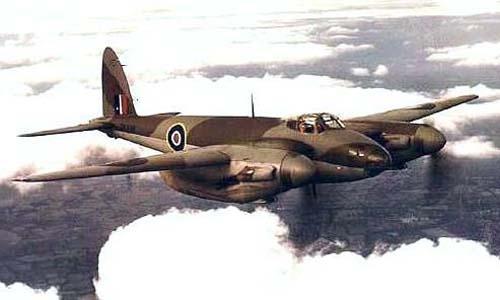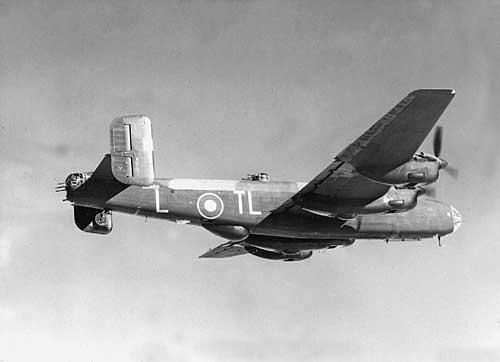
No. 6 (Royal Canadian Air Force) Group
Motto: "Sollertia et ingenium" - "Initiative and skill".
Badge: A maple leaf superimposed on a York rose. The York rose symbolises the association with Yorkshire, where the Group was formed.
Authority: King George VI, October 1946.
A Group unique in the annals of Bomber Command by virtue of its overseas nationality was No. 6 (Royal Canadian Air Force) Bomber Group - or the Canadian Bomber Group as it was sometimes known - which formed in and operated from Yorkshire and neighbouring territory during the second half of the war. From relatively small beginnings, No. 6 Group grew to 14 heavy bomber squadrons and compiled, in the greatest aerial offensive in history, a battle record second to none.
Some idea of No. 6 Group's battle record can be gained from the fact that in 1944 it flew 25,353 operational sorties and dropped 86,503 tons of bombs and mines with the lowest loss percentage of four-engined aircraft in the whole of Bomber Command. Following D-Day, during one single month (August), Halifaxes and Lancasters of the Group flew 3,740 operational sorties and dropped 13,274 tons of bombs - more than the total dropped on London by the Luftwaffe during the entire war. Furthermore, aircraft serviceability was maintained at an average of more than 80 per cent. For two attacks on Duisburg made within a period of 16 hours on 14th October 1944, No. 6 Group supplied 501 aircraft - 25 per cent of the total force - in the greatest day's effort of its existence. Losses were infinitesimal, only five aircraft - four of them in the daylight attack. The Group's heaviest attack of the war was against Dortmund on the night of 6th/7th October 1944, when 293 Lancasters and Halifaxes took off from their Yorkshire and near-Yorkshire bases: 273 bombed the primary target, three attacked an alternative, two failed to return, and the remainder were for various reasons unable to drop their bombs.
The cost of No. 6 Group, with the single exception of the pay and allowances of attached RAF and other non-RCAF personnel, was borne by the Canadian Government and the full upkeep of the operational squadrons, including the cost of fuel and ammunition, was defrayed from Canadian taxes and domestic loans.
At the war's end the RCAF had 11 bomber stations in England. Seven of these were operational stations, controlled by No. 6 Group, and four were bomber training units officially controlled by the RAF Training Group, but having a long association with the Canadian Group. All of these stations were in - or just beyond - the Vale of York in the area north of Harrogate, the famous spa, and the ancient city of York. Group headquarters were in the castle at Allerton Park- immortalised as "Castle Dismal" by No. 6 Group's public relations officer - the home of Lord Mowbray and situated east of Knaresborough.
No. 6 (RCAF) Bomber Group officially assumed operational status at 0001 hours on 1st January 1943. During the next three days the RAF handed over to the Group six stations with the RCAF squadrons established thereon. These were Leeming (Nos. 408 and 424 Squadrons), Middleton St. George (Nos. 419 and 420 Squadrons), Dishforth (Nos. 425 and 426 Squadrons), Croft (No. 427 Squadron), Dalton (No. 428 Squadron) and, lastly, Skipton-on-Swale, which was then still under construction. The Group was also given control of No. 405 Squadron, then serving with Coastal Command (and later transferred to No. 8 (PFF) Group), and No. 1659 HCU with other specialised formations. With the exception of Nos. 405, 408 and 419 Squadrons, which had Halifax IIs or Vs, all the aforementioned squadrons were then flying Wellingtons.
Ready for operations, No. 6 Group flew its first mission on the night of 3rd/4th January, 1943, when six Wellingtons from No. 427 Squadron were sent to lay mines off the Frisian Isles. From that start the Canadian squadrons were active almost right up to VE Day - until their final mission against Wangerooge on 25th April 1945.
As the Group grew other stations and squadrons were added. RAF station Wombleton was turned over to the Canadians while under construction, and was completed by 20th October, to round out the stations of the training base. No. 429 Squadron joined the Group when East Moor station was taken over from the RAF on 1st April. On 18th June 1943, the permanent station of Linton-on-Ouse became Canadian, and with it the Tholthorpe station, then under construction. When Tholthorpe was ready for operations No. 62 (Beaver) Base was formed. The Canadian Group then had under its control the full complement of stations for wartime organisation. On 1st May 1944, Nos. 63 and 64 Bases were created and the only major change that followed was the transfer of the training base to RAF control in November 1944.
Three completely new squadrons were formed by the Group. These were No. 432 on 1st May 1943; No. 434 on 13th June 1943; and No.433, which began to form on 25th September 1943. For some months No. 431 Squadron remained the only Canadian bomber squadron serving with the RAF apart from the Group, but it was taken over on 15th July 1943. Last established squadron to be added was No. 415, which had been serving with Coastal Command, but was transferred to No. 6 Group on 12th July 1944.
As the squadrons converted from Wellingtons through Halifax IIs and V's and Lancaster IIs to Halifax IIIs and VIIs and Lancaster Is, IIIs and Xs, many transfers occurred from station to station. Of all the RCAF squadrons of No. 6 Group, No. 419 alone remained at the one station, Middleton St. George, from the formation of the Group until the end of the war. It was to this squadron, incidentally, that the first Canadian-built Lancaster (Mark X), KB700, the famous Ruhr Express, was delivered, after flying three operational sorties with No. 405 Squadron in No. 8 (PFF) Group as "LQ-Q". With the Moose Squadron it became "VR-Z" and flew a further 46 operational sorties before being destroyed in a crash at Middleton St. George on returning from Nuremberg - its 49th op - on the night of 2nd/3rd January 1945.
In May/June 1943, Nos. 420, 424 and 425 Squadrons were sent to North West Africa Air Command, where they served under No. 331 Medium Bomber Wing until the following November. They then returned to England and to No. 6 Group. The Tiger Squadron settled at Skipton and the Snowy Owls and Alouettes at Tholthorpe. With the arrival of No. 415 Squadron at East Moor in July 1944, all squadrons had been settled at the stations that were to be their homes for the rest of the war.
WWII Headquarters:
- Allerton Park : Oct 1942 onwards
WWII Air Officer's Commanding:
- Air Vice-Marshal GE Brookes : 25th Oct 1942
- Air Vice-Marshal CM McEwen : 29th Feb 1944
- Thunderclap Feb-March





